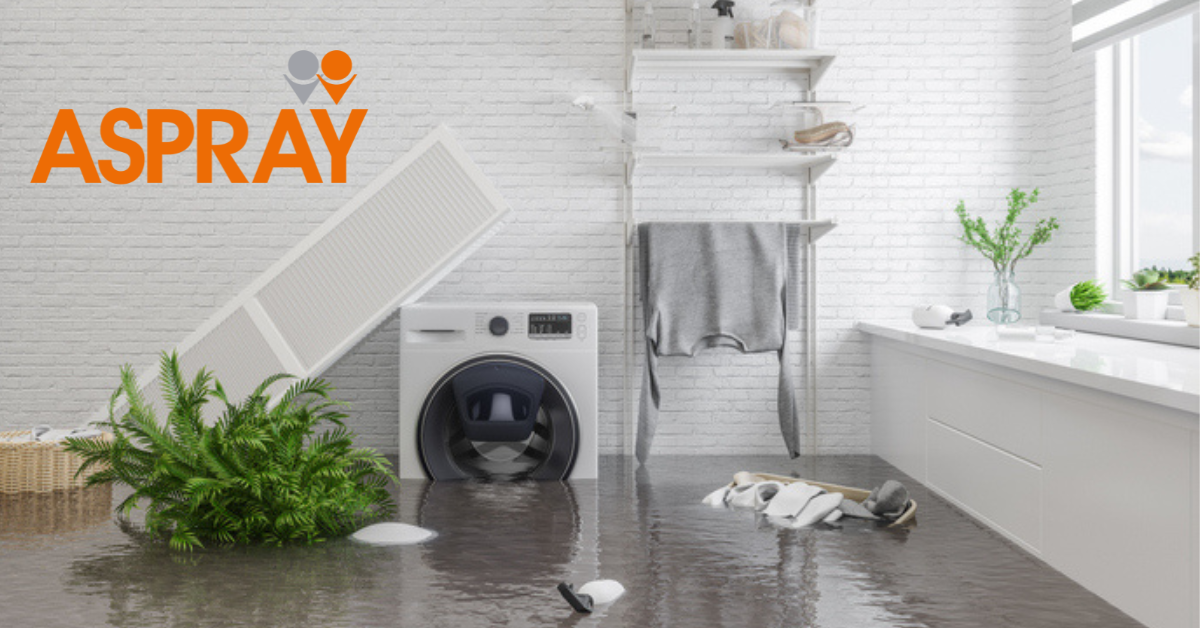

Rise in Escape of Water Claims: What Landlords Should Watch Out For
Almost one in three claims (28.63%) in 2024 were made due to water escaping. [source: Go Compare] Whether it’s a burst pipe in winter or a leaking appliance left unnoticed, the consequences can lead to significant repair bills, lost rent, and unhappy tenants.
Understanding how to spot early warning signs, what insurance covers, and how to handle a claim can help landlords avoid long-term disruption and protect their property investment.
What is an Escape of Water Claim?
An escape of water claim relates to water that leaks from within the property’s plumbing or heating systems. This might include water from:
- Burst pipes
- Leaking water tanks
- Overflowing sinks or toilets
- Faulty washing machines, dishwashers, or boilers
It does not refer to flood damage from external sources, such as rivers or storms.
Why this matters for landlords
When a leak happens in a rental property, the impact can be far-reaching. Beyond the physical damage to walls, ceilings, flooring, and electrics, landlords may also face:
- Loss of rental income if the property becomes uninhabitable
- Complaints or disruption to tenants’ daily life
- Long delays in reinstatement without the right cover or support
- Out-of-pocket expenses if insurance terms are misunderstood
For landlords who don’t live near the property or rely on letting agents, small leaks can quickly escalate before anyone notices.
Warning signs to look out for
Regular inspections and good communication with tenants can help spot issues before they cause major damage. Here are some red flags to look out for:
- Damp patches on ceilings or walls
- Musty smells or the appearance of mould
- Fluctuating water pressure
- Water running noises with no clear source
- Discoloured paint or warped flooring
Encouraging tenants to report issues promptly and conducting routine property checks, especially before and after winter, can go a long way.
The importance of leak detection
When the source of the leak isn’t obvious, a specialist may be needed to carry out leak detection. These professionals use techniques such as thermal imaging, tracer gases, or acoustic listening devices to find hidden leaks with minimal disruption.
This is where Trace and Access cover becomes vital.
What is Trace and Access cover?
Trace and Access is an insurance add-on that covers the cost of locating and exposing the source of a leak. While repairing the damage caused by the actual leak is usually included in standard landlord insurance, finding the leak and any damage caused during the investigation may not be.
Unfortunately, Trace and Access does not come as standard on all landlord policies, so it’s important to check your current level of cover. Without it, you could be left footing the bill for costly investigation work.
Making an Escape of Water claim
If you discover a leak in your rental property, the steps you take early on can make a big difference to the outcome of your claim. Here’s what to do:
- Stop the water source if it’s safe to do so
- Notify your insurer as soon as possible
- Document the damage with photos and written notes
- Appoint a professional (such as a loss assessor) if the damage is significant
- Keep communication open with your tenant throughout
Working with a regulated loss assessor like Aspray can help ensure the full extent of the damage is captured, the claim is negotiated fairly, and reinstatement works are handled professionally.
Preventative steps for landlords
While some leaks are unavoidable, there are steps landlords can take to reduce risk:
- Schedule annual checks of the plumbing and heating systems
- Insulate pipes during colder months to prevent freezing
- Provide guidance to tenants on spotting leaks early
- Install water leak detectors in high-risk areas
- Arrange for regular property inspections if you don’t live locally
Proactive maintenance is not only good practice, but it also strengthens your position should a claim arise.
Escape of water may be one of the most common claim types, but that doesn’t make it any less stressful when it happens. Landlords who stay alert to the warning signs, check their cover for Trace and Access, and act quickly when issues arise are in the best position to recover swiftly.

